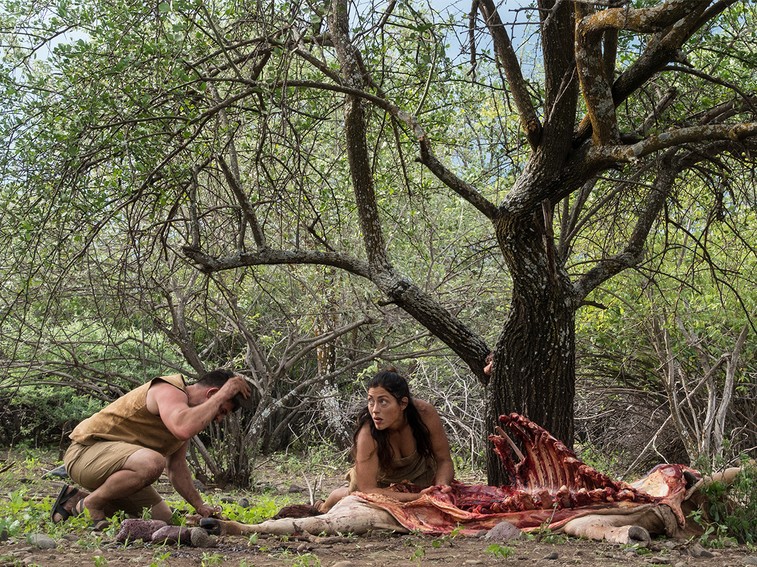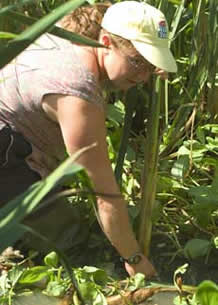
Credit: National Geographic
Watch out for “The Great Human Race” which premiers February 1 at 10/9c on the National Geographic Channel. The programme features Bill Schindler, an anthropologist and experimental archaeologist in the US, as one of the co-presenters. Exeter University’s Dr Linda Hurcombe, as a leading figure in experimental archaeology and primitive technology, was asked to comment on some questions in the lead up to this series being broadcast. This posted message forms part of an ongoing virtual roundtable discussion.
Do you think that experts today can accurately replicate the challenges that Homo habilis faced thousands of years ago? And do you think that experts today could survive and thrive as Homo habilis did?
Dr Linda Hurcombe:
There are short and long answers to these questions. No – they can’t replicate the challenges exactly but they can offer really valuable insights. And no I think the modern experts would still find survival hard but we can learn from their difficulties.
To tackle some of these issues in more detail we have to think through a couple of key aspects. Homo habilis was physically different from us. This species still had toes and hands better adapted to climbing than ours and getting off the ground more easily is a safety issue when people are in environments where there are large predators. The story of human evolution is above all that of a social journey. Putting two people in an savannah environment disadvantages them as there are only two but on the other hand they are fit and active without children and infants. The physical differences come into this again in that H habilis infants would most likely be able to cling onto their mothers but for most modern humans climbing while holding a baby is a challenge of a different order. This kind of programme can make people – academics and public alike – think through some of the challenges faced by our ancestors.
The only elements of material culture which survive from these early periods are made from hard materials but one of the neglected aspects of archaeological discussions about human evolution is the role of perishable material culture, a problem which I have called ‘the missing majority’. The opening programme gives us lots to think about in terms of this problem. Bill and Kat use stone tools and sticks not just to open up food resources and access moisture from tubers but also to add to their safety by using cut off thorny branches to deter predators and to cut tree pegs to help them climb into a tree for overnight safety. They carry food back to share. Carrying devices (food, tools, and children) might have been another one of those crucial items in our evolutionary history.
Even this short discussion shows how a programme which places modern experts into relevant environments using only period-specific technologies creates a debate at an academic level as well as making an informative TV programme.

